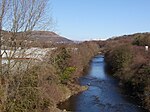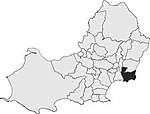St Thomas Church, Swansea
Church in Wales church buildings in West GlamorganGrade II listed churches in SwanseaHistory of Swansea

St Thomas Church is a parish church in the St Thomas district of Swansea in Wales. It is a Grade II listed building and is the only church in Swansea to operate a 24/7 congregation and food bank.
Excerpt from the Wikipedia article St Thomas Church, Swansea (License: CC BY-SA 3.0, Authors, Images).St Thomas Church, Swansea
St. Leger Crescent, Swansea Port Tennant
Geographical coordinates (GPS) Address Nearby Places Show on map
Geographical coordinates (GPS)
| Latitude | Longitude |
|---|---|
| N 51.622 ° | E -3.928 ° |
Address
St. Leger Crescent
SA1 8ET Swansea, Port Tennant
Wales, United Kingdom
Open on Google Maps







